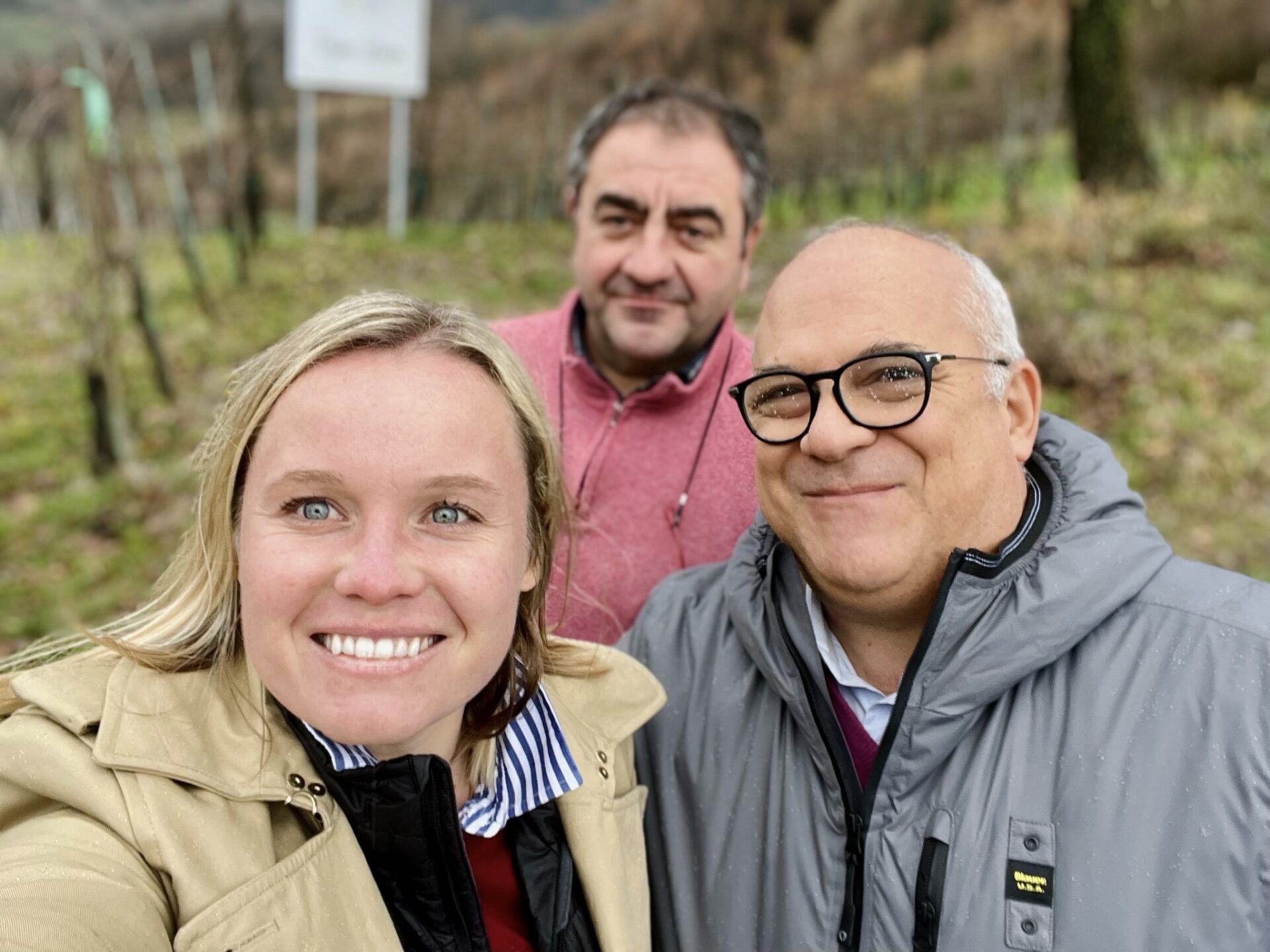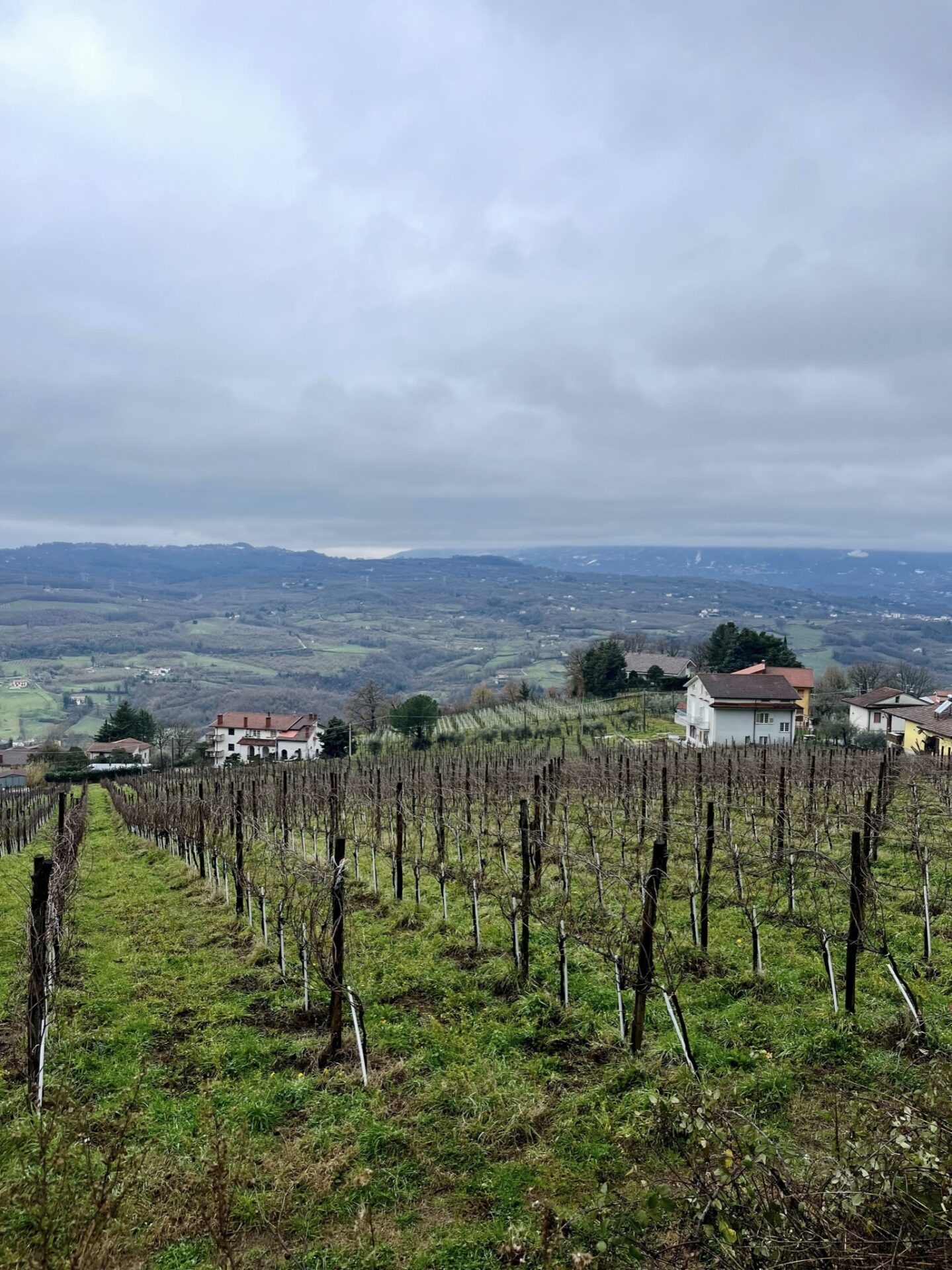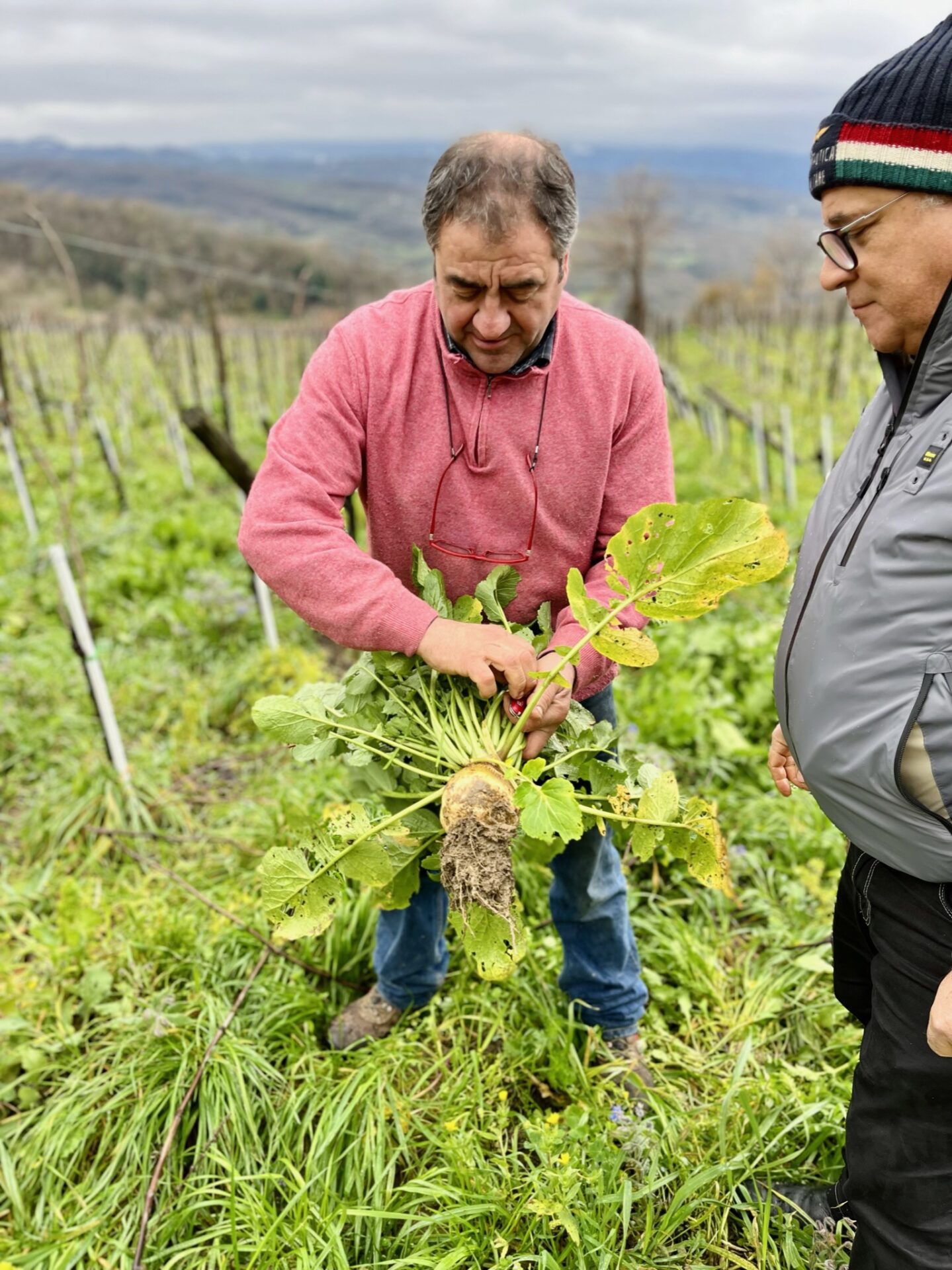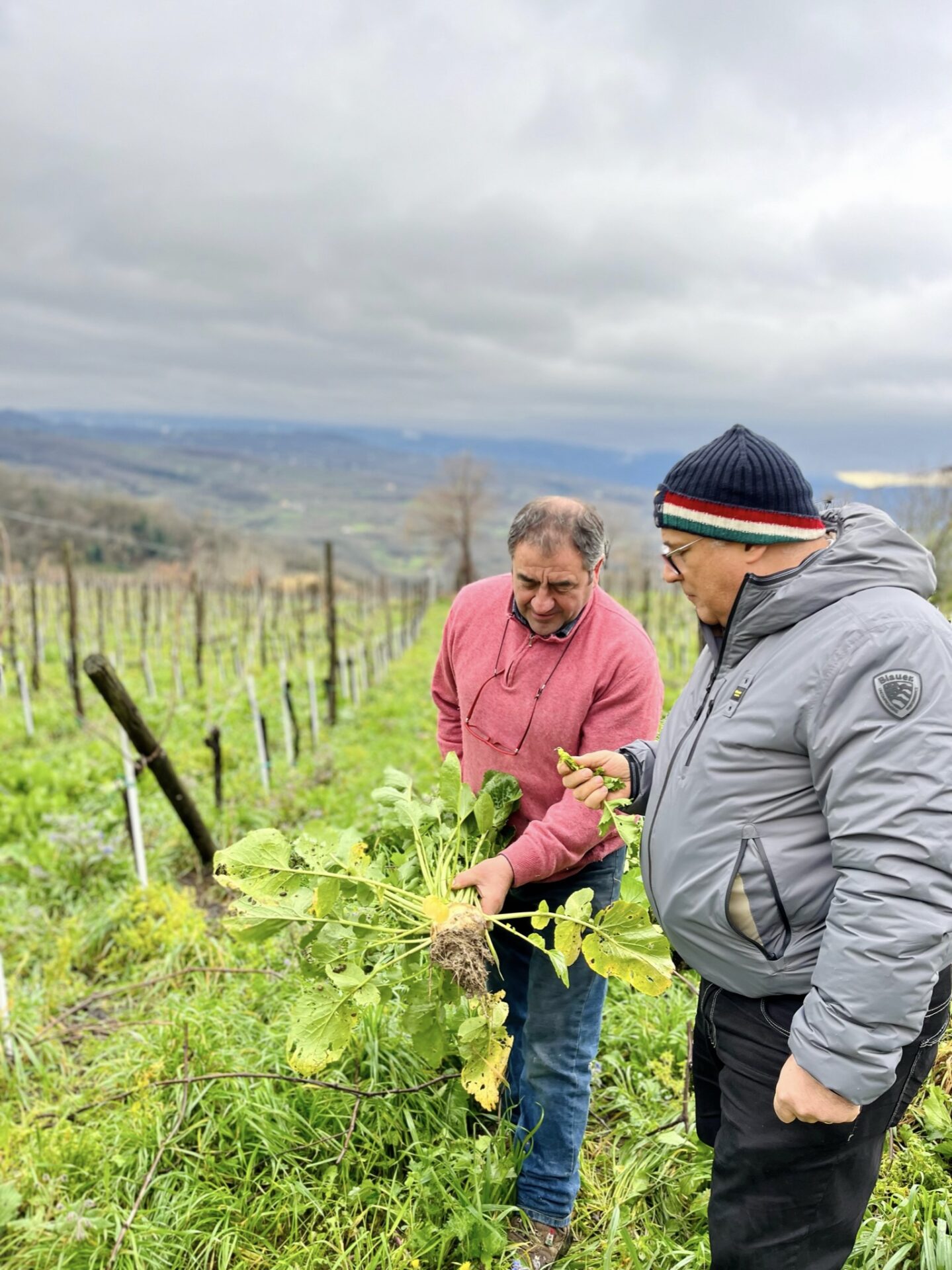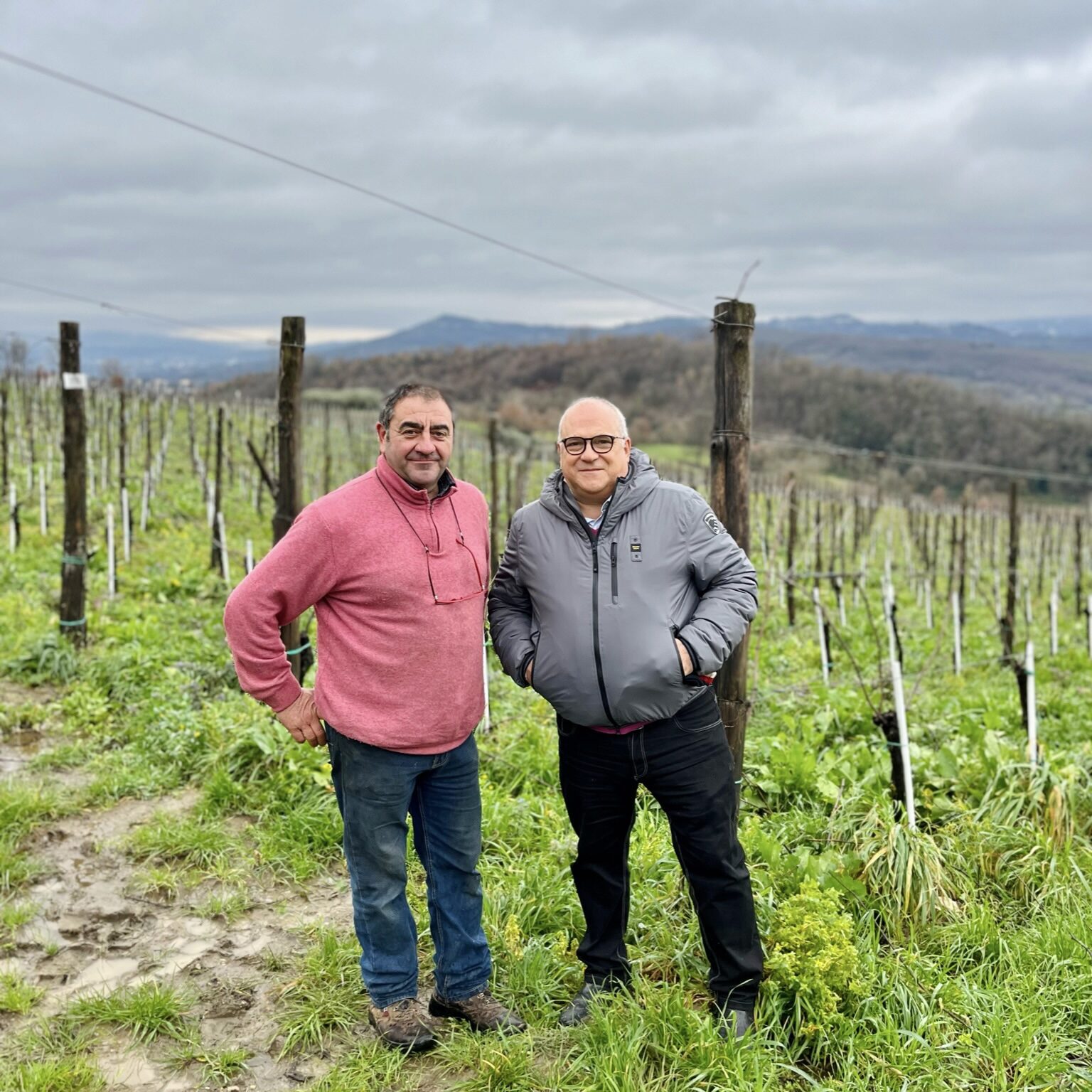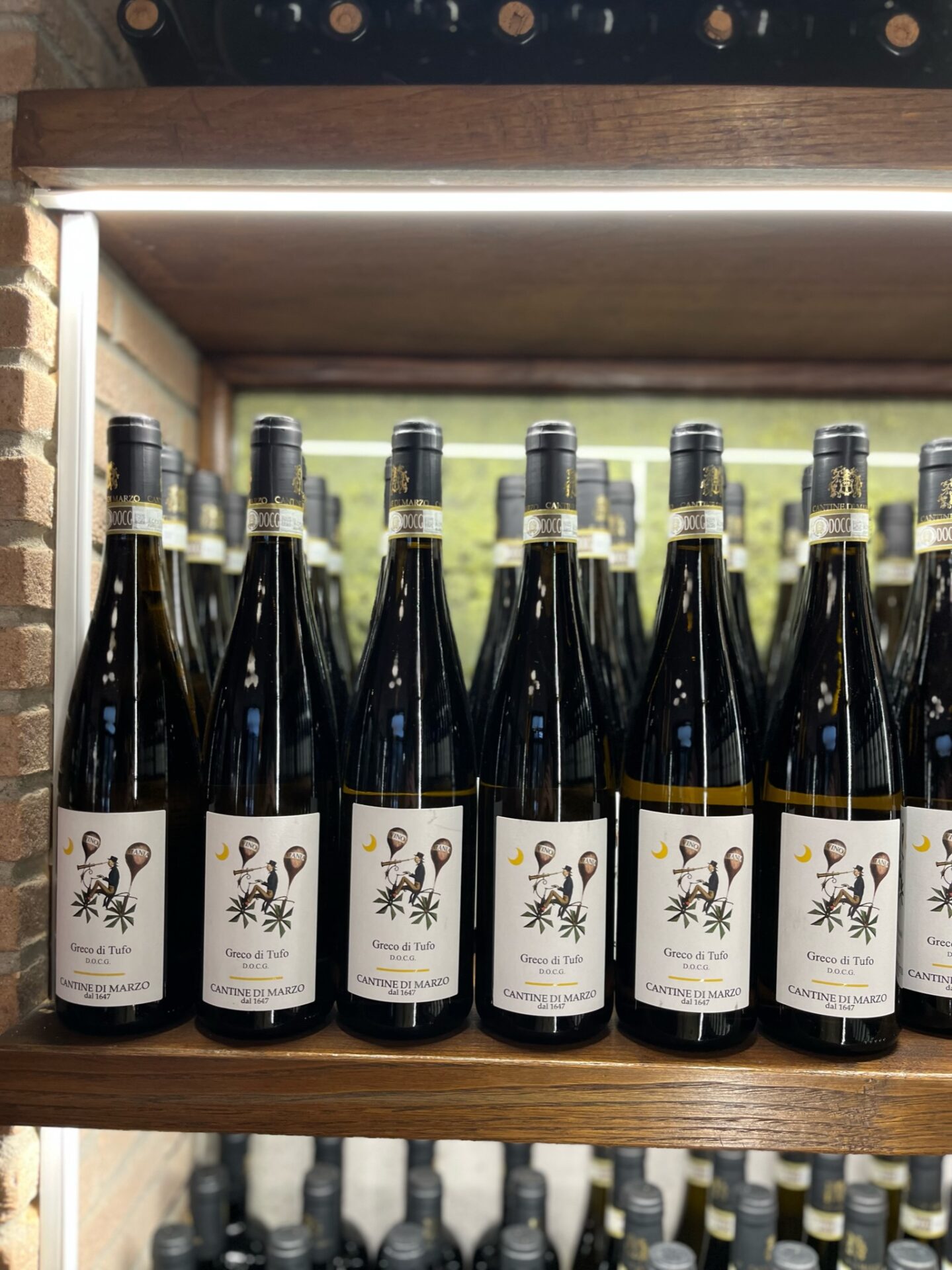2020 Cantine di Marzo Greco di Tufo Riserva “Vigna Laure”
Move aside Chablis, Greco is the new kid in town and he is on fire. Ferrante looks at his wine like children, and he calls this his “straight A” student. It is by the book, perfect and classic in every way.
Certified sustainable, hand-harvested, members of the independent winegrowers association, vegan, and 400 cases produced annually.
$35.00
The legend has it that in 1647 Scipione di Marzo, first known ancestor of the family, left his hometown of San Paolo Belsito, near the town of Nola, to flee from the plague that was ravaging the region. He took with him some vines of a local white variety called at the time “Greco del Vesuvio” or “Greco di Somma”. Once settled in Tufo, he planted this variety in a region previously planted mostly in red. So he became the founder of the wine Greco di Tufo.
Throughout the centuries the di Marzo family became one of the major landowners in the region. In 1866, Francesco di Marzo, while riding on his estate, saw some shepherds burning rocks to keep warm. While examining these rocks, he understood they were burning brimstone found on his land. With this discovery, the family began a large mining activity of natural brimstone, essential for agriculture. The company supplied farmers around the region and employed up to 500 people up to the early 1980’s when the mines ran out.
The di Marzo’s have been members of parliament, senators, and leaders in the region for generations. They were very essential in the development of the railway in the region and even founded the local car race called “Principe di Piemonte.” With a winemaking tradition that dates back to the 16th century, Cantine di Marzo did get registered officially as an Azienda Agricola with the Chamber of Commerce in 1833, thus being the most ancient winery in the Campania region, and one of the oldest in Southern Italy.



